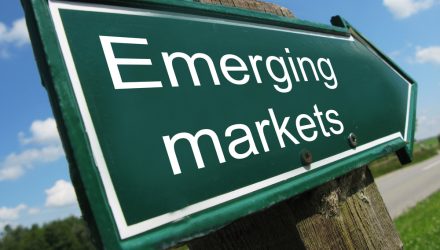Broadly speaking, emerging markets equities are flailing again this year as the MSCI Emerging Markets Index is lower by two-thirds of a percent.
However, there remain pockets of opportunities in developing economies. Advisors can leverage those opportunities with WisdomTree’s Emerging Markets Multi-Factor Portfolio.
“This model portfolio is designed for investors with a long-term horizon looking for exposure to a broad universe of Emerging Market equities primarily using factor focused ETFs,” according to WisdomTree. “The selected ETFs provide certain factor tilts that have the potential to generate excess return relative to comparable cap-weighted benchmarks over longer-term holding periods. The strategies may use both WisdomTree and non-WisdomTree ETFs.”
Emerging markets equities could be back in vogue if there’s regime change here in the U.S. come November and that could be a positive for some of the funds featured in the Emerging Markets Multi-Factor Portfolio.
Revisiting Emerging Markets
Morgan Stanley strategists are looking at developing economies “noting that polls showing a wider lead for Democrats could mean less risk of a drawn-out contesting of results that should help emerging market assets perform well in the near-term. Another U.S. fiscal stimulus package would also help emerging market stocks and bonds, the strategists write,” reports Reshma Kapadia for Barron’s.
A victory by former Vice President Joe Biden on Election Day could lift emerging markets assets because it’s expected his tone toward China – the largest developing economy – will be far less bellicose than President Trump’s has been.
A key component in this WisdomTree model portfolio’s is the WisdomTree Emerging Markets ex-State-Owned Enterprises Fund (NYSEArca: XSOE).
XSOE seeks to track the price and yield performance of the WisdomTree Emerging Markets ex-State-Owned Enterprises Index. Under normal circumstances, at least 80% of the fund’s total assets will be invested in component securities of the index and investments that have economic characteristics that are substantially identical to the economic characteristics of such component securities. The index is a modified float-adjusted market cap weighted index that consists of common stocks in emerging markets, excluding common stocks of “state-owned enterprises.”
There are multiple reasons some market observers are wading back into emerging markets “advocating a broad-based move in and focusing instead on a selective stance: Policy makers have limited room for conventional ways to ease monetary policy, inflation risk and the possibility of weaker currencies, and supply chain disruptions,” according to Barron’s.
For more on how to implement model portfolios, visit our Model Portfolio Channel.
The opinions and forecasts expressed herein are solely those of Tom Lydon, and may not actually come to pass. Information on this site should not be used or construed as an offer to sell, a solicitation of an offer to buy, or a recommendation for any product.








